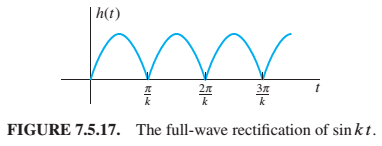
Let

Want to see the full answer?
Check out a sample textbook solution
Chapter 7 Solutions
EP DIFF.EQUAT.+BOUND.VALUE,...UPD.-ACC.
Additional Engineering Textbook Solutions
SURVEY OF OPERATING SYSTEMS
Starting Out with Programming Logic and Design (5th Edition) (What's New in Computer Science)
Starting Out with Java: From Control Structures through Data Structures (4th Edition) (What's New in Computer Science)
Mechanics of Materials (10th Edition)
Web Development and Design Foundations with HTML5 (8th Edition)
Thinking Like an Engineer: An Active Learning Approach (4th Edition)
- Node A is connected to node B by a 2000km fiber link having a bandwidth of 100Mbps. What is the total latency time (transmit + propagation) required to transmit a 4000 byte file using packets that include 1000 Bytes of data plus 40 Bytes of header.arrow_forwardanswer should avoid using AI and should be basic and explain pleasearrow_forwardasnwer should avoid using AIarrow_forward
- answer should avoid using AI (such as ChatGPT), do not any answer directly copied from AI would and explain codearrow_forwardWrite a c++ program that will count from 1 to 10 by 1. The default output should be: 1, 2, 3, 4, 5, 6 , 7, 8, 9, 10 There should be only a newline after the last number. Each number except the last should be followed by a comma and a space. To make your program more functional, you should parse command line arguments and change behavior based on their values. Argument Parameter Action -f, --first yes, an integer Change place you start counting -l, --last yes, an integer Change place you end counting -s, --skip optional, an integer, 1 if not specified Change the amount you add to the counter each iteration -h, —help none Print a help message including these instructions. -j, --joke none Tell a number based joke. So, if your program is called counter, counter -f 10 --last 4 --skip 2 should produce 10, 8, 6, 4 Please use the last supplied argument. If your code is called counter, counter -f 4 -f 5 -f 6 should count from 6. You should…arrow_forwardshow workarrow_forward
 C++ for Engineers and ScientistsComputer ScienceISBN:9781133187844Author:Bronson, Gary J.Publisher:Course Technology Ptr
C++ for Engineers and ScientistsComputer ScienceISBN:9781133187844Author:Bronson, Gary J.Publisher:Course Technology Ptr Operations Research : Applications and AlgorithmsComputer ScienceISBN:9780534380588Author:Wayne L. WinstonPublisher:Brooks Cole
Operations Research : Applications and AlgorithmsComputer ScienceISBN:9780534380588Author:Wayne L. WinstonPublisher:Brooks Cole Systems ArchitectureComputer ScienceISBN:9781305080195Author:Stephen D. BurdPublisher:Cengage Learning
Systems ArchitectureComputer ScienceISBN:9781305080195Author:Stephen D. BurdPublisher:Cengage Learning


